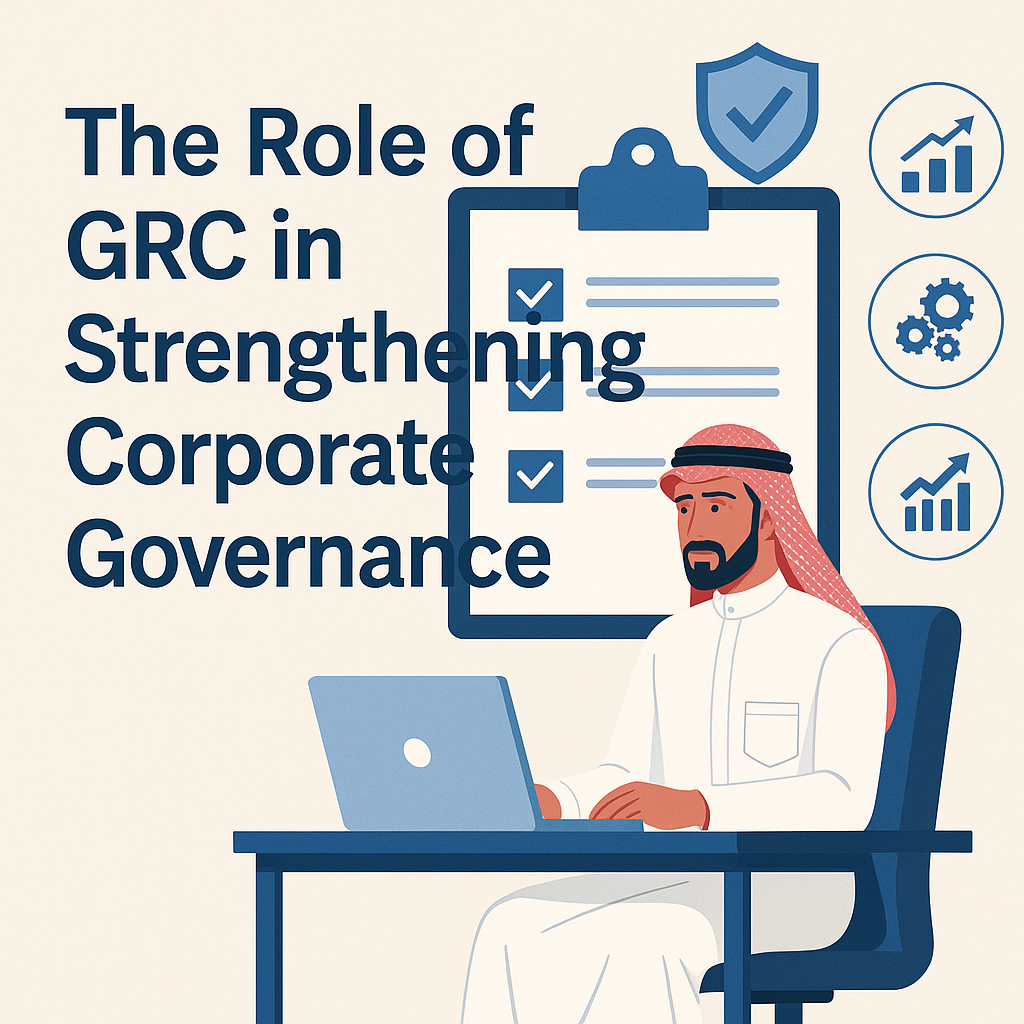
• Introduction
In today’s high-stakes business environment, governance failures can destroy reputations and cost millions. In Saudi Arabia, the stakes are even higher as Vision 2030 pushes for transparency, investor trust, and international standards. According to a 2024 KPMG report, 67% of Saudi companies are increasing investment in GRC (Governance, Risk, and Compliance) systems to boost governance compliance.
With the Capital Market Authority (CMA) and the Saudi Central Bank enforcing stringent regulations, GRC has emerged as a strategic necessity. Let’s explore how GRC strengthens corporate governance in Saudi Arabia and why your organization must act now.
• Understanding GRC
GRC is a unified strategy for aligning governance policies, managing enterprise risk, and ensuring compliance with legal and internal standards.
Key Components of GRC:
- Governance: Frameworks that ensure ethical decision-making and leadership transparency.
- Risk Management: Identifying, analyzing, and addressing potential business threats.
- Compliance: Adhering to local and international regulatory standards.
Integrated GRC enables holistic oversight across all business functions.
• Market Relevance in Saudi Arabia
Saudi Arabia’s corporate sector is evolving quickly:
- Vision 2030 demands transparency and operational integrity.
- Foreign investments require businesses to meet international governance benchmarks.
- CMA and SAMA are tightening audit and reporting standards.
Why GRC Matters:
- Reduces exposure to regulatory penalties.
- Enhances investor confidence.
- Promotes sustainable business practices.
• Key Challenges
- Fragmented Systems
Many companies operate compliance and risk management in silos.
- Lack of Skilled Personnel
A shortage of trained GRC professionals limits effective adoption.
- Cultural Resistance
Top-down, hierarchical structures often resist transparency-focused reforms.
- Cost Concerns
Smaller enterprises struggle to fund comprehensive GRC implementations.
• Solutions & Best Practices
- Use Integrated GRC Platforms
Solutions like CG BOD centralize governance tasks, ensuring visibility and compliance tracking.
- Conduct Risk Audits
Identify vulnerabilities and build tailored risk mitigation strategies.
- Align GRC with Business Goals
Tie compliance efforts to KPIs and strategic targets.
- Promote Ethical Leadership
Train executives and teams on ethics, responsibility, and corporate accountability.
- Create a Compliance Culture
Foster openness through whistleblower policies and ongoing education.
• Real-World Successes
Case Study 1: Finance Firm in Riyadh
A major financial firm used CG BOD to unify their GRC operations, reducing audit preparation time by 40% and improving CMA compliance.
Case Study 2: Logistics Company in Dammam
Implemented risk dashboards and scenario planning tools, significantly lowering operational disruptions during Q4 of 2024.
• Conclusion
GRC is not just a regulatory checkbox—it is a strategic framework that strengthens Saudi businesses by aligning leadership ethics, risk controls, and compliance efforts.
